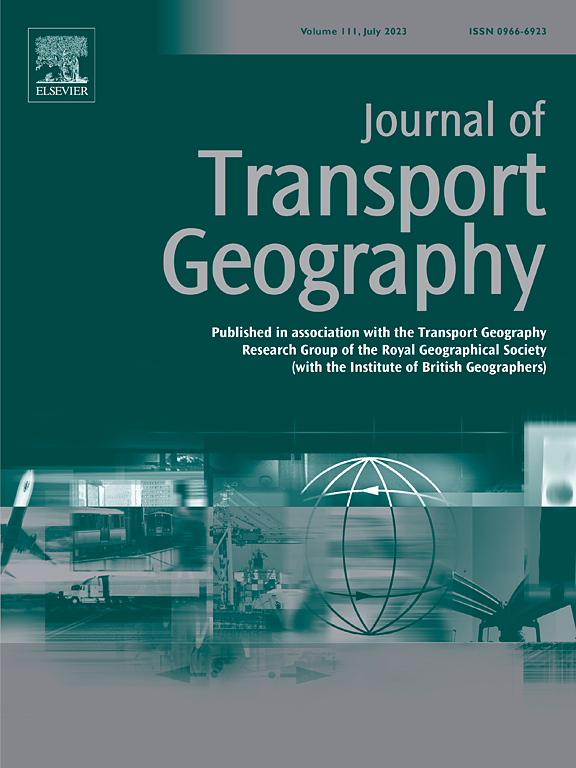15分钟的城市轨道:评估瑞典斯德哥尔摩公交用户的食物可及性
IF 6.3
2区 工程技术
Q1 ECONOMICS
引用次数: 0
摘要
“15分钟城市”概念为宜居、可持续发展的城市提供了一个框架,但在衡量可达性时,往往忽略了人类的流动性、公共交通和邻近性以外的因素。本研究引入了一种可解释的、个人层面的、基于轨迹的可达性度量,考虑了通过交通系统与便利设施的连接、可负担性、运营时间以及邻近性。案例研究是在瑞典的斯德哥尔摩进行的。使用ST-DBSCAN,从交通频繁用户的交通智能卡数据中挖掘出行模式,以构建具有代表性的轨迹。杂货店的可达性被定义为沿单个轨迹在15个锚点步行范围内可到达的商店数量。结果显示,人口密集、适合步行的市中心居民的住宅可达性较高,但价格合理的商店较少。考虑到移动性,生活在交通连接性高的农村或郊区的个人观察到可达性大幅增加。然而,那些生活在交通连通性差的地区的人,可达性得到了边际改善。由于居住在资源丰富的地区,市中心的居民也看到了可达性的边际改善。基于轨迹的可达性度量可以确定需要改善可达性的区域或评估政策对可达性的影响(例如,交通路线的改变)。本文章由计算机程序翻译,如有差异,请以英文原文为准。
The 15-minute city around one's trajectory: Evaluating food accessibility for transit users in Stockholm, Sweden
The “15-minute city” concept provides a framework for livable, sustainable cities but often overlooks human mobility, public transit, and factors beyond proximity when measuring accessibility. This study introduces an interpretable, individual-level, trajectory-based accessibility measure considering connections to amenities through the transportation system, affordability, and operating hours in addition to proximity. A case study is performed in Stockholm, Sweden. Using ST-DBSCAN, travel patterns are mined from transit smartcard data of frequent transit users to build representative trajectories. Grocery store accessibility is defined as the number of stores reachable within a 15-walk of anchors along individual trajectories. Results show residents of the dense, walkable city center have high home-based accessibility, but fewer affordable stores. Considering mobility, individuals living in rural or suburban areas with high transit connectivity observe large, positive accessibility increases. However, those living in areas with poor transit connectivity observe marginal accessibility improvements. Residents of the city center also observe marginal accessibility improvements as they already live in resource-rich areas. The trajectory-based accessibility measure can identify areas requiring accessibility improvements or evaluate policy effects (e.g., changes in transit routes) on accessibility.
求助全文
通过发布文献求助,成功后即可免费获取论文全文。
去求助
来源期刊

Journal of Transport Geography
Multiple-
CiteScore
11.50
自引率
11.50%
发文量
197
期刊介绍:
A major resurgence has occurred in transport geography in the wake of political and policy changes, huge transport infrastructure projects and responses to urban traffic congestion. The Journal of Transport Geography provides a central focus for developments in this rapidly expanding sub-discipline.
 求助内容:
求助内容: 应助结果提醒方式:
应助结果提醒方式:


